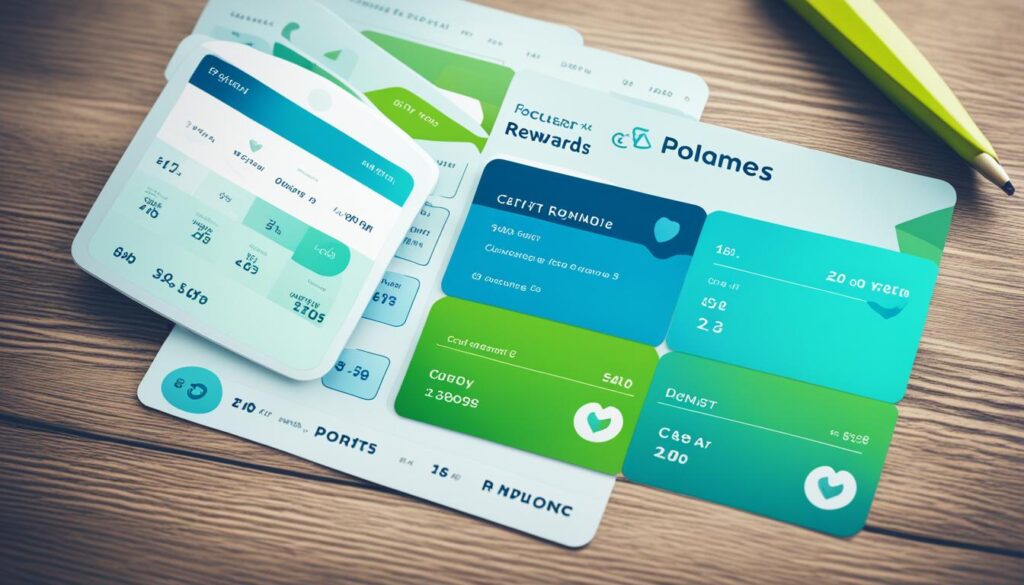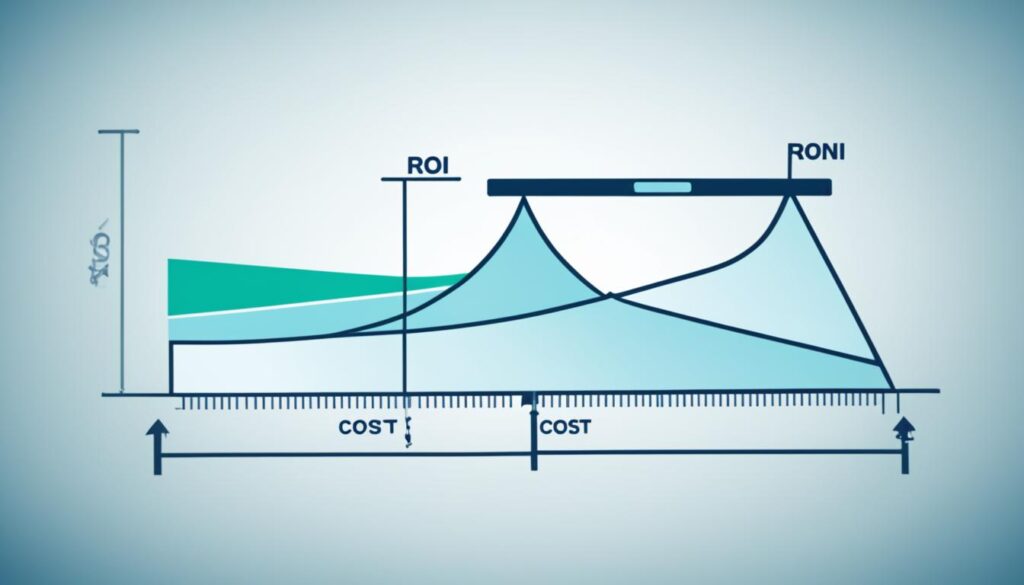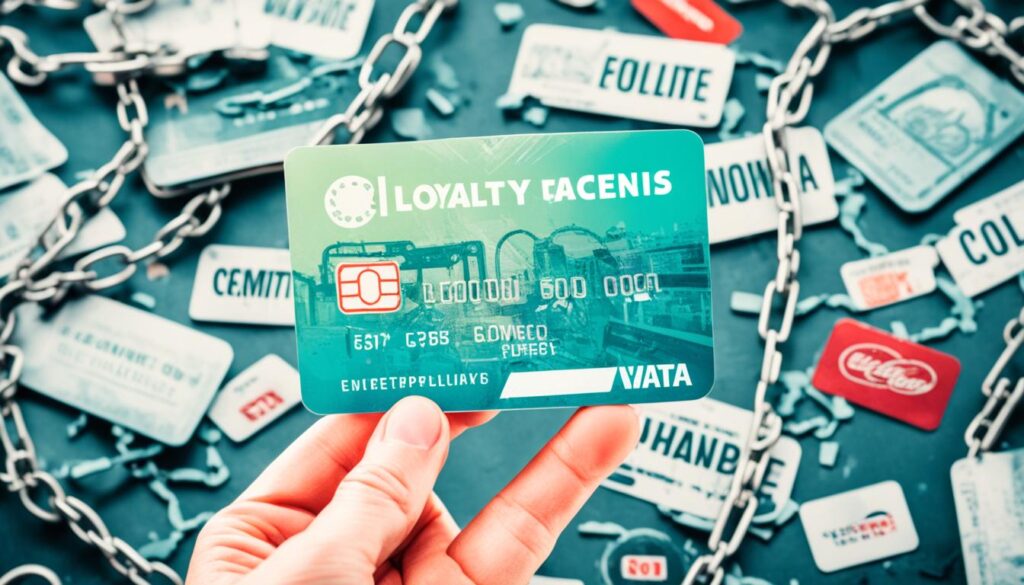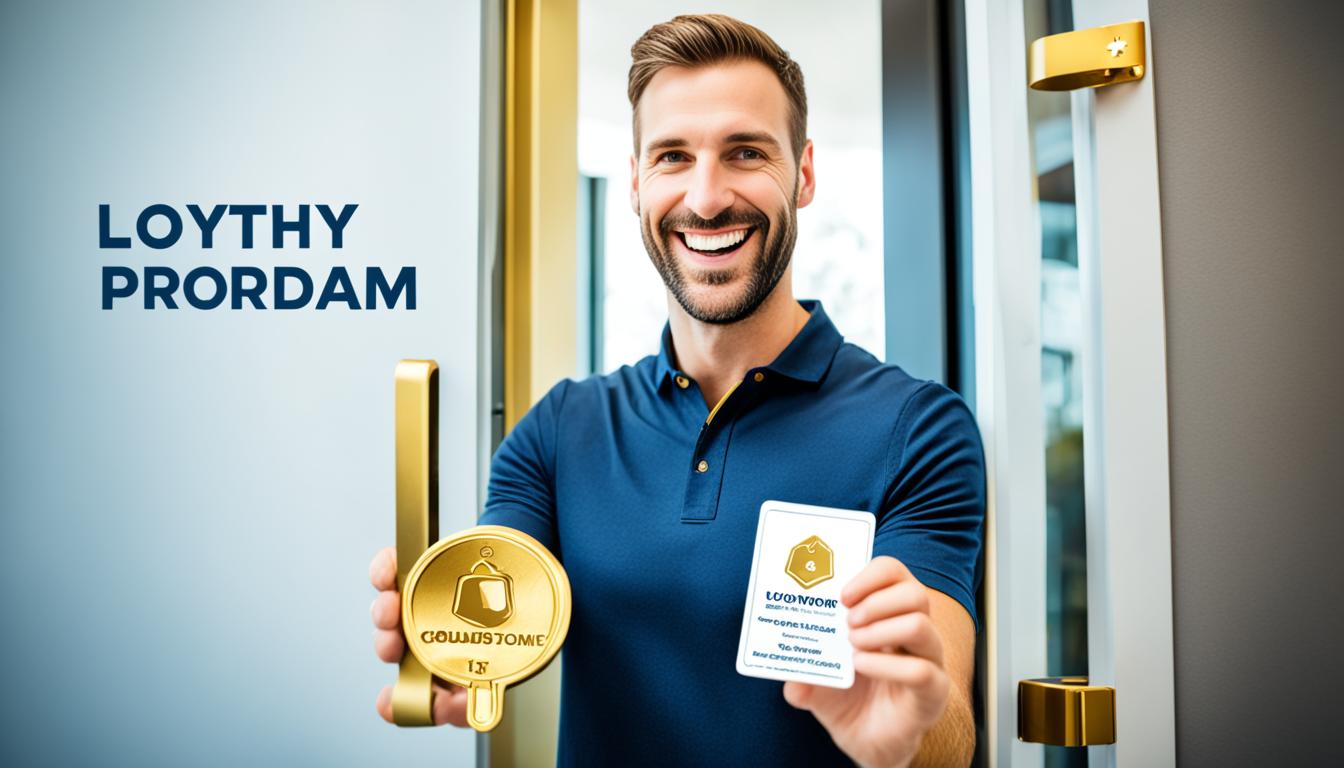Did you know that companies with a loyalty program typically experience a 20% increase in revenue compared to those without one? Loyalty programs are more than just a trendy marketing tactic; they play a significant role in a business’s financial prosperity. Whether your business is small or large, implementing a loyalty program can bring various advantages for both your brand and your customers. In this article, we will explore the different benefits of having a loyalty program, the various types you can consider, and how to create and measure the success of your own loyalty program.
Key Takeaways:
- A loyalty program can boost a business’s revenue by an average of 20%.
- Implementing a loyalty program can bring numerous benefits to both companies and customers.
- There are various types of loyalty programs to choose from, including points-based, tiered, subscription-based, and value-based.
- Creating a loyalty program requires careful planning, defining objectives, and implementing the program using loyalty program management software.
- Measuring the success of a loyalty program involves tracking customer retention, customer lifetime value, and other relevant metrics.
The Benefits of Creating a Loyalty Program
Loyalty programs offer numerous benefits for businesses. As a retention tool, loyalty programs encourage customers to continue purchasing from the brand, leading to increased sales and revenue. Loyal customers tend to spend more, helping businesses increase their average order value and overall profitability. Additionally, loyal customers are more likely to recommend the brand to others, acting as brand advocates and contributing to customer acquisition.
Implementing a loyalty program also enhances brand recognition. By offering exclusive discounts, perks, and rewards to loyal customers, businesses create a positive image and build customer loyalty. This strengthens the brand-customer relationship and fosters a sense of trust and loyalty towards the brand.
Furthermore, loyalty programs improve customer communication. By gathering valuable customer data through program memberships, businesses gain insights into customer preferences and behaviors. This data can be used to personalize marketing messages and offers, increasing the relevance and effectiveness of marketing campaigns. Effective communication fosters a deeper connection with customers and enhances their overall experience with the brand.
For customers, loyalty programs offer various benefits and incentives. These include discounts on products or services, exclusive perks such as free shipping or priority access to new releases, personalized recommendations based on past purchases, and the opportunity to belong to a community of like-minded individuals. Loyalty programs make customers feel valued and appreciated, leading to increased satisfaction and engagement.
Benefits of Creating a Loyalty Program:
- Increased customer retention and repeat purchases
- Positive brand recognition and customer trust
- Improved customer communication and personalized experiences
- Valuable customer data for informed marketing decisions
- Discounts, exclusive perks, and personalized recommendations
- A sense of belonging to a community of loyal customers
Types of Loyalty Programs
When it comes to loyalty programs, there is no one-size-fits-all approach. Different businesses employ different types of loyalty programs tailored to their unique goals and customer base. Let’s explore four main types of loyalty programs: points-based, tiered, subscription-based, and value-based.
1. Points-Based Loyalty Program
This type of loyalty program rewards customers with points for each purchase they make. These points can then be redeemed for various rewards, such as discounts, free products, or exclusive experiences. Points-based programs are popular among retailers and e-commerce businesses as they provide customers with tangible incentives to keep coming back.
2. Tiered Loyalty Program
A tiered loyalty program offers customers different levels of rewards based on their loyalty status. As customers move up the tiers, they unlock more exclusive benefits and perks. This approach motivates customers to reach higher tiers by consistently engaging with the brand and making frequent purchases. Tiered programs are commonly used by airlines, hotels, and luxury brands.
3. Subscription-Based Loyalty Program
Instead of earning rewards through purchases, customers in a subscription-based loyalty program pay a recurring fee to access exclusive benefits and services. This type of program is often used by subscription-based businesses, such as streaming services or membership-based organizations. The subscription fee ensures a predictable revenue stream while offering customers ongoing value.
4. Value-Based Loyalty Program
A value-based loyalty program centers around the organization’s values and mission. Customers who align with the brand’s values can participate in the program to support a cause or contribute to a greater purpose. This type of loyalty program appeals to customers who are socially conscious and want to make a positive impact through their purchases. Non-profit organizations and companies with strong corporate social responsibility often adopt value-based loyalty programs.
Each type of loyalty program has its strengths and benefits, and businesses can choose the one that best aligns with their brand identity and customer base. By understanding the various types of loyalty programs available, businesses can design programs that engage customers, foster loyalty, and drive long-term growth.

Creating a Customer Loyalty Program
When it comes to building customer loyalty, implementing a well-designed loyalty program is key. Here’s a step-by-step guide on how to start a loyalty program, manage it effectively, and ensure its success.
1. Define Your Objectives
Start by determining what you want to achieve with your loyalty program. Are you aiming to increase customer retention, boost sales, or gather valuable customer data? Clearly defining your objectives will help you shape the program accordingly.
2. Determine the Program Structure
Next, decide on the structure of your loyalty program. Will you implement a points-based system, a tiered program, or a subscription-based model? Consider what will resonate best with your target audience and align with your brand values.
3. Choose Rewards and Incentives
Select rewards and incentives that will motivate and excite your customers. These can include exclusive discounts, freebies, personalized offers, or early access to new products. The key is to provide value that aligns with your customers’ interests and preferences.
4. Implement Loyalty Program Software
To effectively manage your loyalty program, invest in loyalty program management software. These tools streamline program operations, track customer engagement, and provide valuable analytics for informed decision-making.
5. Develop Strategies for Success
Crafting effective loyalty program strategies is crucial for achieving optimal results. Engage your customers through personalized experiences that make them feel valued and appreciated. Encourage desired customer behaviors through targeted promotions and communications. Leverage customer data to create targeted marketing campaigns that resonate with your loyal customers.
“A successful loyalty program engages customers, promotes desired behaviors, and leverages customer data for targeted marketing campaigns.”
By following these steps and implementing a customer loyalty program, you can strengthen your relationships with customers, foster brand loyalty, and drive long-term business growth.

Measuring Success of a Loyalty Program
When it comes to loyalty programs, measuring success is essential to understand their effectiveness in boosting customer retention and driving business growth. By tracking key metrics, businesses can gain valuable insights into the performance of their loyalty programs and make informed decisions to optimize their strategies.
One of the most important metrics to measure is customer retention rate. This metric indicates the percentage of customers who continue to make repeat purchases and remain loyal to the brand. A high retention rate suggests that the loyalty program is effectively engaging and retaining customers.
Another crucial metric is the customer lifetime value (CLV), which measures the total revenue a customer generates throughout their relationship with the brand. By analyzing CLV, businesses can determine the value of loyal customers and assess the impact of the loyalty program on customer spending.
The average order value (AOV) is another metric that provides insights into the purchasing behavior of loyalty program members. A higher AOV indicates that customers are motivated to spend more in order to unlock rewards, thus driving up overall revenue.
“Our loyalty program has not only increased customer retention but also boosted our AOV significantly. It’s rewarding to see our customers’ enthusiasm and loyalty translate into higher sales.”
The number of referrals generated by loyal customers is also an important metric to consider. Referrals indicate the level of customer satisfaction and the effectiveness of the loyalty program in motivating customers to recommend the brand to their friends and family. Positive word-of-mouth can lead to new customer acquisitions and further expand the program’s reach.
Customer incentives and rewards play a crucial role in motivating customers to participate in the loyalty program and contribute to its success. By offering attractive rewards, exclusive discounts, and personalized perks, businesses can create a sense of value and excitement that encourages customers to stay engaged and loyal.
Key Metrics for Measuring Loyalty Program Success
| Metric | Description |
|---|---|
| Customer Retention Rate | The percentage of customers who continue to make repeat purchases and remain loyal to the brand. |
| Customer Lifetime Value (CLV) | The total revenue generated by a customer throughout their relationship with the brand. |
| Average Order Value (AOV) | The average amount spent by customers per order, indicating their willingness to spend more to unlock rewards. |
| Referrals Generated | The number of new customers acquired through referrals from loyal customers. |

By carefully monitoring these metrics and continuously evaluating the performance of the loyalty program, businesses can make data-driven decisions to optimize their strategies, refine incentives, and enhance the overall customer experience. Measuring success allows businesses to identify areas for improvement, drive customer engagement, and ultimately maximize the ROI of their loyalty programs.
Calculating the Cost and ROI of a Loyalty Program
When implementing a loyalty program, it’s essential to consider the cost and return on investment (ROI) to ensure its effectiveness. Calculating the cost involves evaluating various factors, including the cost of rewards and incentives, program management, and marketing expenses. By accurately assessing these components, businesses can determine the true cost of their loyalty program.
Additionally, understanding the ROI allows organizations to measure the program’s success and justify its financial investment. Loyalty programs offer a higher ROI compared to customer acquisition campaigns due to their focus on customer retention. Retaining existing customers is more cost-effective than acquiring new ones, as loyal customers tend to make repeat purchases and have a higher customer lifetime value.
To calculate the ROI of a loyalty program, compare the program’s cost with the increase in customer retention, customer lifetime value, and overall revenue generated. This analysis provides valuable insights into the program’s effectiveness and helps businesses make data-driven decisions regarding future investments in their loyalty initiatives.
Customer Acquisition Cost
Customer acquisition cost (CAC) is an important metric to consider when evaluating the ROI of a loyalty program. CAC refers to the average expense incurred to acquire each new customer, including marketing and advertising costs. By comparing the CAC to the cost of implementing and running a loyalty program, businesses can determine whether the program offers a more cost-effective approach to customer acquisition.
Customer Lifetime Value
Customer lifetime value (CLV) measures the total revenue a customer generates throughout their relationship with a business. Loyalty programs aim to increase CLV by incentivizing customers to make repeat purchases and remain loyal to the brand. By calculating the difference in CLV between loyal customers who participate in the loyalty program and non-participating customers, businesses can assess the program’s impact on customer behavior and overall profitability.
| Loyalty Program Cost Factors | Considerations |
|---|---|
| Rewards and Incentives | Cost of providing rewards, discounts, or exclusive perks to loyalty program members. |
| Program Management | Costs associated with program administration, technology, and staff training. |
| Marketing Expenses | Investments in promoting the loyalty program to attract new members and engage existing customers. |
By carefully considering these cost factors and conducting a comprehensive analysis of the program’s impact on customer retention, CLV, and revenue, businesses can make informed decisions about the viability and effectiveness of their loyalty program. This data-driven approach ensures that the program aligns with the organization’s objectives and delivers a positive ROI.

Loyalty Program Risks and Solutions
While loyalty programs offer numerous benefits, it’s important to be aware of the potential risks and challenges they can present. Understanding these risks allows businesses to implement effective solutions and ensure the success of their loyalty programs.
Risks and Challenges
1. Customer Fatigue:
Customers may become overwhelmed by the number of loyalty programs they are a part of, leading to reduced engagement and participation.
2. Program Saturation:
Saturation in the market can result in customers being less receptive to loyalty programs, making it harder for businesses to stand out and retain customer interest.
3. Fraudulent Activities:
There is always a risk of fraudulent activities like fake accounts, ineligible redemptions, or misuse of program benefits, which can undermine the program’s integrity and profitability.
4. Ongoing Program Maintenance:
Implementing and maintaining a loyalty program requires continuous effort, including updating program offerings, managing customer data, and resolving issues promptly, all of which can be time-consuming and resource-intensive.
Solutions
To address loyalty program risks and challenges, businesses can implement the following solutions:
- Program Refresh:
Regularly refresh the program offerings to keep them interesting and engaging for customers. This can include introducing new rewards, exclusive experiences, or partner collaborations.
- Strong Security Measures:
Implement robust security measures to protect the program from fraudulent activities. This can include multi-factor authentication, fraud detection systems, and regular audits of program data.
- Analyze Program Performance:
Regularly analyze program performance to identify areas for improvement. This can be done by tracking key metrics such as customer engagement, redemption rates, and customer feedback.
- Excellent Customer Support:
Provide exceptional customer support to address any concerns or issues promptly. This can help build trust and loyalty among program participants.
By implementing these solutions, businesses can mitigate loyalty program risks, enhance customer engagement, and ensure the long-term success of their programs.

| Challenges | Solutions |
|---|---|
| Customer Fatigue | Program Refresh |
| Program Saturation | Strong Security Measures |
| Fraudulent Activities | Analyze Program Performance |
| Ongoing Program Maintenance | Excellent Customer Support |
Loyalty Programs as a Competitive Advantage
In a competitive market, loyalty programs can serve as a competitive advantage by helping businesses differentiate themselves from competitors and attract and retain customers. By offering exclusive perks, personalized experiences, and a sense of community, loyalty programs can enhance brand recognition, build customer loyalty, and create a lasting emotional connection with customers. Loyalty programs also reduce the focus on price alone and instead emphasize the overall customer experience and value.

Benefits of Loyalty Programs for Brands
1. Customer Retention: Loyalty programs incentivize customers to stay with a brand, promoting repeat purchases, and long-term loyalty.
2. Brand Differentiation: By offering unique rewards and experiences, loyalty programs set a brand apart from competitors, attracting customers.
3. Increased Sales: Loyal customers often spend more on a brand’s products or services, boosting revenue and profitability.
4. Market Share Expansion: Through increased customer retention, loyalty programs help a brand grow its market share.
5. Data Insights: Customer data gathered through loyalty programs can provide valuable insights for targeted marketing strategies.
Customer Benefits of Loyalty Programs
1. Exclusive Perks: Loyalty program members enjoy exclusive discounts, freebies, or early access to new products or services.
2. Personalized Experiences: Brands can tailor rewards and communications based on individual customer preferences and behavior.
3. Sense of Community: Loyalty programs create a community of like-minded customers who share a connection with the brand.
4. Better Customer Service: Loyalty program members often receive dedicated customer support and priority assistance.
5. Rewards for Loyalty: Customers can earn points or rewards for their loyalty, making their purchases more rewarding.
Examples of Successful Loyalty Programs
| Brand | Loyalty Program Highlights |
|---|---|
| Starbucks | Points-based system with free food and drinks, personalized offers, and member-exclusive events. |
| Sephora | Tiered program with different levels of perks, personalized beauty recommendations, and birthday gifts. |
| Amazon Prime | Subscription-based program with free shipping, exclusive deals, streaming services, and access to Prime Day sales. |
| Nike | Value-based program that supports charitable causes, special edition product releases, and member-only events. |
The Importance of Customer Loyalty
Customer loyalty is a critical factor in the success of businesses, as it directly contributes to higher revenues, increased customer lifetime value, and reduced customer acquisition costs. When customers are loyal to a brand, they are more likely to make repeat purchases, spend more money, and become advocates who actively promote the brand to others.
Building strong customer loyalty requires a focus on delivering exceptional customer experiences, personalized engagement, and ongoing communication. By prioritizing customer satisfaction and creating positive interactions at every touchpoint, businesses can cultivate a loyal customer base that is deeply connected to the brand.
A well-designed loyalty program can play a significant role in fostering customer loyalty. By providing exclusive rewards, personalized offers, and seamless experiences, loyalty programs incentivize customers to choose and stick with a particular brand. These programs create a sense of value and appreciation, encouraging customers to remain loyal and further engage with the brand.
Research shows that loyal customers not only generate a higher share of revenue but also have a higher customer lifetime value. They are more likely to try new products or services, be forgiving of occasional mistakes or hiccups, and continue supporting the brand even during challenging times. Moreover, loyal customers often become brand ambassadors, sharing their positive experiences and recommendations with their network, thus driving new customer acquisition without additional marketing efforts.

The Benefits of Customer Loyalty
- Increased Revenue: Loyal customers are more likely to make frequent purchases, spend more money, and contribute to the overall growth of the business.
- Reduced Customer Acquisition Costs: Acquiring new customers can be expensive. By focusing on customer loyalty, businesses can reduce their marketing expenses and allocate resources more efficiently.
- Brand Advocacy: Loyal customers become brand advocates who share positive experiences and recommendations with friends, family, and colleagues, driving new customer acquisition through word-of-mouth.
- Customer Retention: Building customer loyalty helps retain existing customers, reducing churn and creating a stable customer base.
- Improved Customer Lifetime Value: Loyal customers tend to have higher lifetime values as they continue to make repeat purchases and engage with the brand over an extended period.
By investing in customer loyalty and implementing effective strategies, businesses can unlock these benefits and gain a competitive edge in their market. When customers feel valued and appreciated, they are more likely to choose a specific brand over competitors and remain loyal in a long-term relationship. Customer loyalty programs are a powerful tool that can be utilized to strengthen relationships, enhance customer experiences, and drive sustainable business growth.
How Loyalty Programs Enhance the Customer Experience
Loyalty programs are designed to enhance the customer experience by offering various perks and benefits to members. These programs provide a sense of exclusivity, recognition, and value to customers, creating a stronger brand-customer relationship. Let’s explore how loyalty programs contribute to overall customer satisfaction:
1. Loyalty Program Perks
One of the main advantages of joining a loyalty program is gaining access to exclusive perks. These perks can include discounts, freebies, personalized offers, and early access to products or sales. By providing special benefits to loyal customers, businesses show their appreciation and make customers feel valued.
2. Personalized Recommendations
A key feature of loyalty programs is personalized recommendations. By analyzing customer preferences and purchase history, businesses can offer tailored product suggestions that align with the individual’s interests. This personalized approach enhances the shopping experience and saves customers time by presenting them with relevant recommendations.
3. Customer Engagement
Loyalty program membership fosters customer engagement and interaction with the brand. Members often receive exclusive updates, newsletters, and invitations to events or exclusive experiences. By involving customers in these activities, businesses strengthen the bond between the customer and the brand, leading to increased loyalty and advocacy.
“Loyalty programs allow us to provide personalized recommendations and rewards to our loyal customers, making their experience with us feel unique and special.” – Sarah Johnson, Head of Marketing
The personalized nature of loyalty programs not only benefits the customer but also allows businesses to gather valuable customer insights. By tracking customer behavior and preferences, businesses can refine their marketing strategies and deliver more targeted and relevant campaigns.
| Loyalty Program Benefits | Customer Satisfaction |
|---|---|
| Discounts and exclusive deals | A sense of value and recognition |
| Personalized recommendations | Enhanced shopping experience |
| Engaging customers through events and exclusive updates | Stronger brand-customer relationship |
| Customer data collection | Improved marketing strategies |

Overall, loyalty programs play a crucial role in enhancing the customer experience. By offering valuable perks, personalized recommendations, and engaging experiences, businesses can cultivate stronger customer loyalty and satisfaction. By implementing an effective loyalty program, businesses can differentiate themselves from competitors and build long-lasting relationships with their customers.
Conclusion
Loyalty programs offer numerous benefits for both businesses and customers. They are a powerful tool to improve customer retention, increase sales, enhance brand recognition, and foster stronger relationships between customers and brands. By implementing effective loyalty program strategies, businesses can create valuable experiences for their customers and drive long-term business growth.
Understanding the types of loyalty programs available is key to designing a program that aligns with the brand’s goals and customers’ preferences. Whether it’s a points-based program, a tiered program, a subscription-based program, or a value-based program, each type offers unique advantages and caters to different customer needs.
Measuring the success of a loyalty program is essential to determine its effectiveness and make informed decisions. By tracking relevant metrics such as customer retention rate, customer lifetime value, and average order value, businesses can assess the program’s impact on customer loyalty, repeat purchases, and revenue growth.
Ultimately, loyalty programs are a win-win for businesses and customers. They create a sense of value, exclusivity, and belonging for customers, while businesses benefit from increased customer loyalty and higher revenues. By focusing on creating engaging experiences, personalized rewards, and meaningful interactions, businesses can leverage loyalty programs to build lasting relationships with their customers and drive sustainable business growth.
FAQ
Do you have a loyalty program?
Yes, we have a loyalty program in place to reward our loyal customers.
What are the benefits of a loyalty program?
Loyalty programs offer numerous benefits for businesses, such as increased customer retention, improved brand recognition, better customer communication, and valuable customer data for marketing decisions. For customers, loyalty programs provide discounts, exclusive perks, personalized recommendations, and a sense of belonging to a community.
What are the different types of loyalty programs?
The four main types of loyalty programs are points-based, tiered, subscription-based, and value-based. Points-based programs reward customers with points for each purchase, which can be redeemed for rewards or discounts. Tiered programs offer different levels of rewards based on customer loyalty status. Subscription-based programs require customers to pay a fee for exclusive benefits. Value-based programs focus on supporting a cause and aligning with the brand’s values.
How do I create a customer loyalty program?
To create a customer loyalty program, you should define your objectives, determine the program structure, choose rewards and incentives, and implement the program using loyalty program management software. It’s important to align the program with your brand’s values and customer preferences. Strategies for a successful loyalty program include engaging customers through personalized experiences, promoting desired customer behaviors, and leveraging customer data for targeted marketing campaigns.
How do I measure the success of a loyalty program?
The success of a loyalty program can be measured through various metrics, such as customer retention rate, customer lifetime value, average order value, and the number of referrals generated. These metrics indicate the program’s effectiveness in increasing customer loyalty, driving repeat purchases, and acquiring new customers through referrals. Incentives and rewards play a crucial role in motivating customers to participate in the loyalty program and contribute to its success.
How do I calculate the cost and ROI of a loyalty program?
Calculating the cost of a loyalty program involves considering factors such as the cost of rewards and incentives, program management costs, and marketing expenses. The return on investment (ROI) can be calculated by comparing the program’s cost to the increase in customer retention, customer lifetime value, and revenue generated. Loyalty programs offer a higher ROI compared to customer acquisition campaigns, as retaining existing customers is more cost-effective than acquiring new ones.
What are the risks and challenges of a loyalty program?
Potential risks and challenges of a loyalty program include customer fatigue, program saturation, fraudulent activities, and the need for ongoing program maintenance. To mitigate these risks, businesses can refresh the program offerings, implement strong security measures, and regularly analyze program performance. Providing excellent customer support and addressing customer concerns promptly can also help overcome any program challenges.
How can a loyalty program be a competitive advantage?
In a competitive market, loyalty programs can serve as a competitive advantage by helping businesses differentiate themselves from competitors, attract and retain customers. By offering exclusive perks, personalized experiences, and a sense of community, loyalty programs enhance brand recognition, build customer loyalty, and create a lasting emotional connection with customers. Loyalty programs also reduce the focus on price alone and instead emphasize the overall customer experience and value.
Why is customer loyalty important?
Customer loyalty is crucial for businesses as it leads to higher revenues, increased customer lifetime value, and reduced customer acquisition costs. Loyal customers are more likely to make repeat purchases, spend more money, and recommend the brand to others. Building strong customer loyalty requires a focus on delivering exceptional customer experiences, personalized engagement, and ongoing communication, all of which can be facilitated through a well-designed loyalty program.
How do loyalty programs enhance the customer experience?
Loyalty programs enhance the customer experience by offering perks such as discounts, exclusive deals, early access to products, and personalized recommendations based on customer preferences and purchase history. These perks not only provide tangible benefits to customers but also create a sense of exclusivity, recognition, and value. By engaging customers through personalized experiences and rewards, loyalty programs foster a stronger brand-customer relationship and contribute to overall customer satisfaction.









